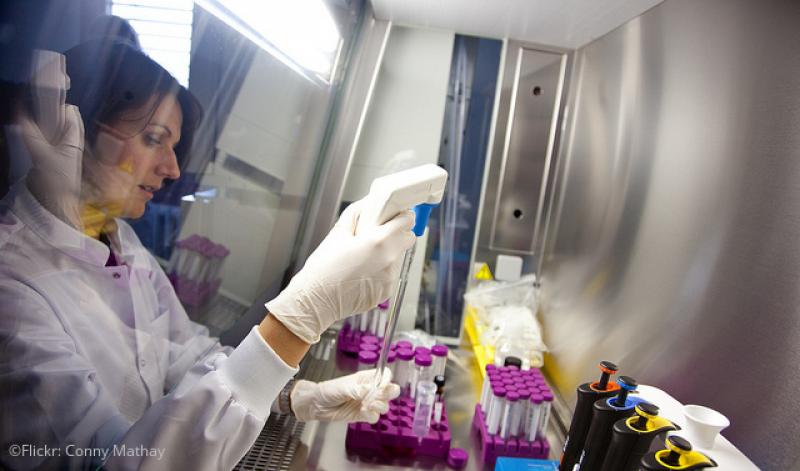
ECJ ruling on gene editing products: Victory for consumers, farmers, environment
The European Court of Justice (ECJ) today published its ruling on the legal status of food and feed crops derived from certain new genetic modification techniques. It gave clear confirmation that organisms from these new gene editing techniques are covered by existing EU GMO regulation.
Reacting to the decision, Corporate Europe Observatory’s agribusiness campaigner Nina Holland said:
“This is a big victory for the environment, farmers and consumers. It clarifies that EU decision makers have to ensure that products from these new techniques are assessed for potential food safety and environmental risks, and that they are properly labelled as GMOs.
“Big agribusiness corporations will continue their lobbying in Brussels to escape EU safety rules for the new GMOs, but today's ruling leaves no doubt: Products from gene editing are covered by the existing EU GMO rules.
"This ruling also means that the secret, unregulated field trial currently run in Belgium is illegal. The CRISPR-technique does in no way have a "history of safe use", and the plants used in this trial are undoubtedly GMOs. Belgian authorities should act accordingly and halt this trial."
Contact:
Nina Holland, +32 466 294420
nina.holland@corporateeurope.org
Notes to editors:
- The ECJ ruling:
The ECJ has concluded that products from new gene editing (GE) techniques are to be considered genetically modified organisms (GMOs) and as such are covered by existing EU GMO regulation. Importantly, the court clarifies that only the old mutagenesis techniques that were already exempted, are to be excluded from the scope of the law.
The case was referred to the EU court by the French Conseil d'État after French organisations had filed it at the national level.
- Biotech industry lobbying and stakes: The biotech industry has been making an audacious bid to have products of the new generation of genetic engineering techniques exempted from existing EU regulation for genetically modified organisms (GMOs). With dozens of patents for new GM techniques already filed, the patent holders including big agrochemical corporations like Bayer/Monsanto, BASF, and Dow Agrosciences have great financial stakes in keeping the regulation fo their techniques as minimal as possible. As Testbiotech reports, DowDuPont has filed around 50 international patent applications for gene editing and plants, followed by Bayer-Monsanto with around 30 applications.
- EU adherence to the UN Cartagena Protocol on Biosafety: The EU is Party to the UN Cartagena Protocol on Biosafety, which obliges it to respect other countries’ rights to refuse certain GMOs. If a Party to the treaty, in this case the EU, were to not monitor and label certain GMO varieties it exports, this Party will be unable to respect its obligations under the Cartagena Protocol.
- The techniques in question: The new generation of genetic manipulation techniques refers to different types of gene editing techniques, including oligonucleotide-directed mutagenesis , agroinfiltration and zinc finger nuclease technology. These techniques involve the cutting of DNA strands at specific locations to create tailor-made genetic changes which are different from the change patterns resulting from previous GM techniques.
- Citizen, academic and NGO voices on the issue: Scientists, consumer groups, famers and NGOs have called for products from gene editing and other new GM techniques to be regulated under existing GMO rules, as any new approach to producing food and feed crops should be fully tested and its products labelled to ensure their safety for the public and the environment.
- Belgian CRISPR field trial illegal? A secret and unregulated field trial with CRISPR maize by the Flemish Institute for Biotechnology (VIB) was held in 2017 and 2018. The plants tested in the field have been produced from a plant that was clearly categorised as a GMO. In this case the EU GMO law should have been applied, and the field trial should have been registered as a GM trial including biosafety measures.
